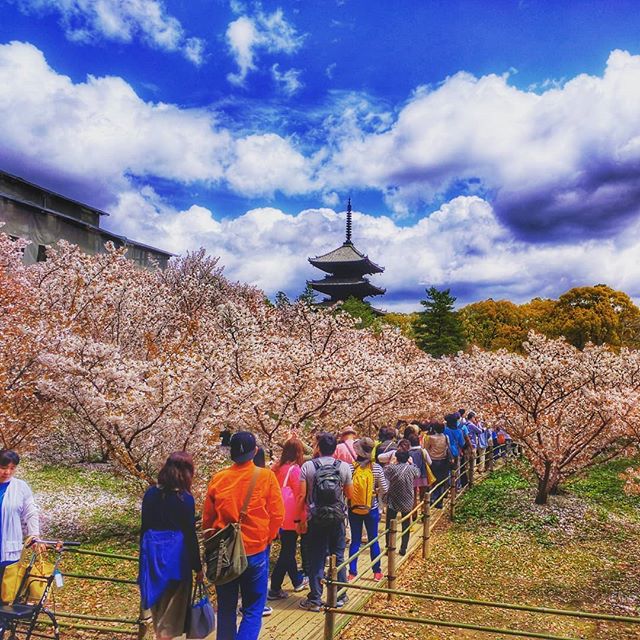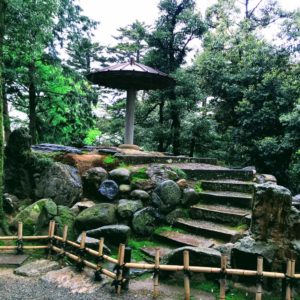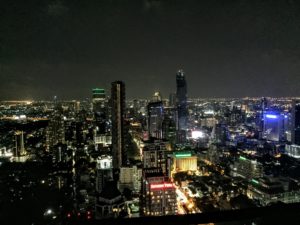Japan: A land of rich history, beautiful gardens, a famously rising sun, and some of the most complicated language and etiquette expectations EVER!
Well, I can’t teach you everything you need to know about the language in this post. But if you’re traveling to Japan and wondering what’s expected of you as far as behavior…well, you’re asking the right questions, AND you’re in the right place! Japanese etiquette is completely different from anywhere else I’ve ever experienced. Second only to the incredibly complex language, Japanese social norms are the most confusing and anxiety-inducing elements of being a foreigner in Japan. It is a culture steeped deeply in respect and honor, and politeness is held in much higher regard here than anywhere I’ve ever experienced.
It’s surprising. It’s confusing. But above all, it’s beautiful.
So welcome to your basic “crash course” on How To Be A Foreigner In Japan.” I’ve divided this post into different situational categories, in case you are looking for something specific. I’m going to try to keep it as accessible as possible to any Westerner, but I may draw some comparisons that specifically relate to New York. If you are reading this in another location and want to contribute a comparison that makes more sense for you, leave a comment!
How To Be Polite Anywhere!
Click to jump to any section.
People in Public Places (in general)
What To Expect From the Locals
The Japanese are polite. And I mean EVERYWHERE.
When you are on a train, the train conductor will enter the car, bow, collect the tickets, reach the back of the
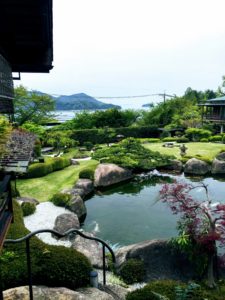
train, and bow before exiting, even though he (or she) is literally bowing to everyone’s back!
When we went to a Starbucks (don’t judge; we were desperate for sustenance after getting lost and bug-bitten, and there was literally nothing else around), the cashier came out from behind her register to search for a table where we could sit, and when we decided to sit outside on the patio, she came back and opened the door for us. And yes, there was a line of people waiting behind us, and they all patiently waited. Even the children are polite. At Tokyo Disneyland, everyone arrives for shows at least thirty minutes prior to the start of the show, and the CHILDREN at DISNEYLAND SIT PATIENTLY AND WAIT WITHOUT COMPLAINING. Oh yes. This is a special place indeed
What Is Expected Of You
Other than gawking at how polite the Japanese are to everyone around them, what does this mean for you as a foreigner? Here’s how I always describe it: No matter where you are, behave as if you are in the living room of someone you respect. Would you whip out a slice of pizza and start eating it in the living room of someone you respect? No. So don’t do it on a train, even if that’s normal in your country (it is in New York!). Would you play your music loudly or have a loud conversation in the home of someone you respect? No. So don’t do it on the bus or on the street. Would you drop your trash in someone’s home? No. So don’t do it anywhere but a trash or recycling bin.
A note about aforementioned trash: You might notice that there are very few trash bins and very little litter. This is because 1. People don’t eat while walking, so they don’t generate a lot of trash on the go, and 2. People hold onto their trash until they find an appropriate receptacle. It’s that simple.
Transportation
Trains: Basic Logistics
Japan has an intricate and complex network of trains and subways, offering “rapid” (express) service as well as local service, which makes all of the stops on the line. To use this network in Tokyo, you will get a Suica card, which you will use to tap into the subway, and then tap out again when you leave. You will be charged according to the length of your trip (so, fellow New Yorkers, this is a change from our universal charge to get anywhere!). You don’t need to swipe or insert your Suica card. Just a tap will do, and you can even keep it inside of your wallet. The machine will detect your card through fabric.
Exception to this rule: You might be thinking about getting a JR Pass. This really only makes sense if you are planning on taking long distance trains, like the Shinkansen (bullet train) and visiting multiple cities. JR Passes are handled differently, and you’re better off getting that information directly from their website than from me. If you are planning on staying in Tokyo, you’re better off just using the Suica card.
Trains: Etiquette
As I’ve mentioned, keep your voice down and your phone on silent while you are on the train. If you scan the crowd of Japanese locals on a train, they will all be immersed silently in their phones, but you will never hear a single one of those phones making a sound. While you are waiting for the train, observe a similar level of politeness while waiting in line. In New York, the “etiquette” for boarding a subway is to push your way to the front of the line even if you are the last person to arrive at the platform. In Japan, you wait in line. The Japanese are civilized. New Yorkers are monsters.
You might notice that some trains have one pink car. It will have some Japanese writing, and most likely the English words “Women Only.” The rules for this train car should be relatively obvious. You probably have an image in your head of the passengers of a Japanese rush hour train being packed in like sardines. It makes sense that there would be a car in which only women could be packed in like this. They can be a little safer, AND things can run more efficiently (which is, of course, very important in Japan!). In most cases, the “women only” restriction is only enforced during rush hour. Use the context clues around you. If you are a man and you see Japanese men boarding the “women only” car during a non-rush hour time, you can too.
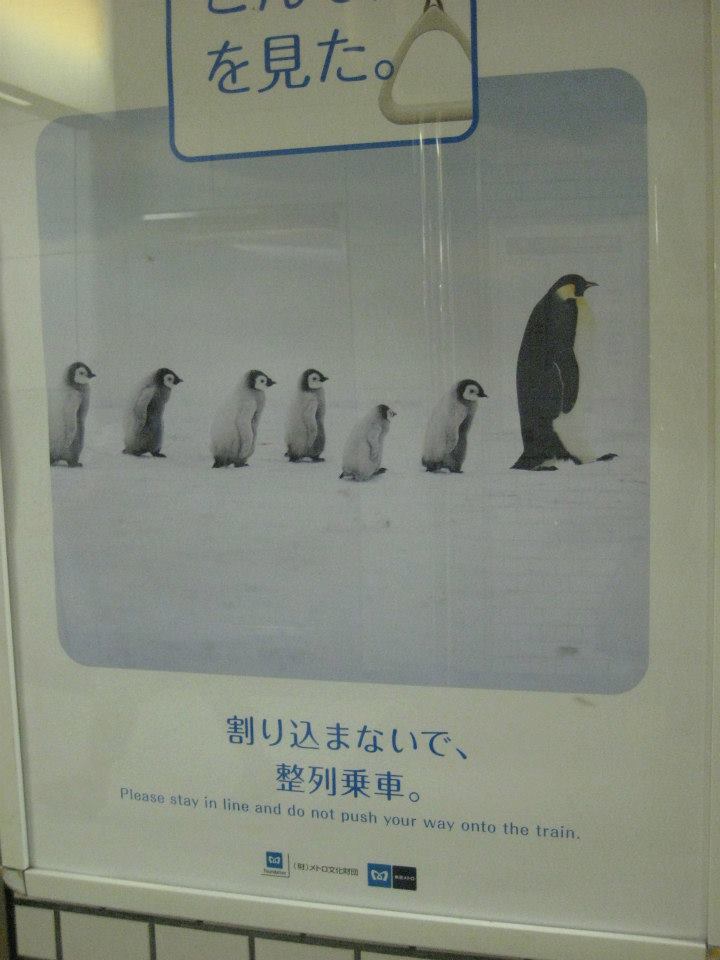
Walking and Biking in Japan
Other popular methods of transportation are biking and walking. Pay attention to make sure you are not in the wrong lane! Also, carefully observe the Walk/Don’t Walk signals. Coming from a culture in which every day is like a human game of Frogger, this was probably the biggest culture shock for me!
If the signal says Don’t Walk, the expectation is that you…well, don’t walk. Even if there are no cars in sight, you are supposed to wait for the light to change to Walk. Jaywalking is NOT a thing. I guess they treat it a little bit like a red or green light when driving. Even if you don’t see a car coming, you don’t drive through a red light. Same rules apply when walking in Japan! I’ll admit, I couldn’t bring myself to follow this rule all of the time. I definitely walked against the light when there were no people around to give me a horrified look! You can take the girl out of Manhattan….
Shopping and Dining
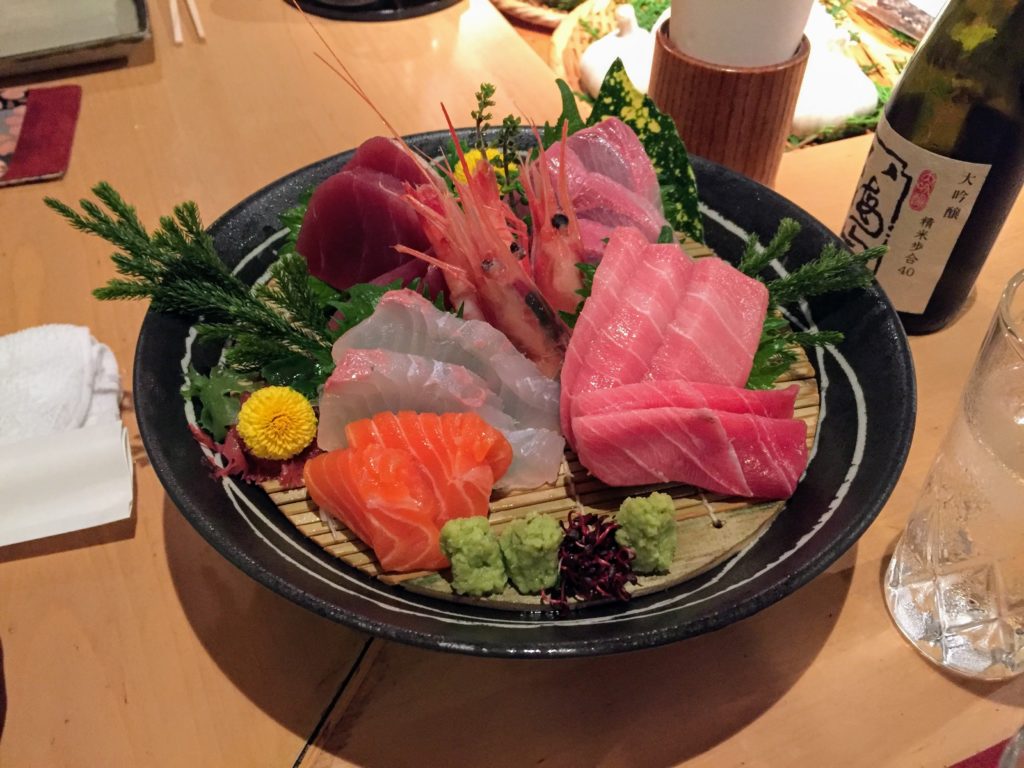
WELCOME!!!!!
When you are a customer in a store or restaurant, you are the esteemed guest, and everyone is so honored and happy to have you here! They will shout “IRASHAIMASE!” as you walk in the door (“ee-rahsh-ah-ee-mah-seeeeeeeh!”) and you will feel like you are obligated and expected to say something back to such an enthusiastic greeting. Good news! You’re not! A smile and nod of acknowledgement is totally fine, and not just because you’re a tourist who doesn’t know any better. It’s ACTUALLY the appropriate response! In certain restaurants, they might also shout at you as you’re leaving. Don’t be startled. They just want to thank you for coming and wish you well!
How To Pay
Here’s one that surprised me: When shopping anywhere (grocery store, department store, etc), you should use both hands to give your credit card or cash to the clerk. They will most likely give you a little tray. Put the card or money in the tray (with both hands). They will then return your card/change and receipt in the tray, which they will hand you with both hands and a small head bow. Receive it in turn with both hands and a small head bow.
It seems strange at first, but when you get back home, you will be shocked at how rude you feel when you give someone your payment method with only one hand, and without the little tray as a middleman! This “use both hands to give and receive items” rule applies to pretty much everything, including your passport at the airport!
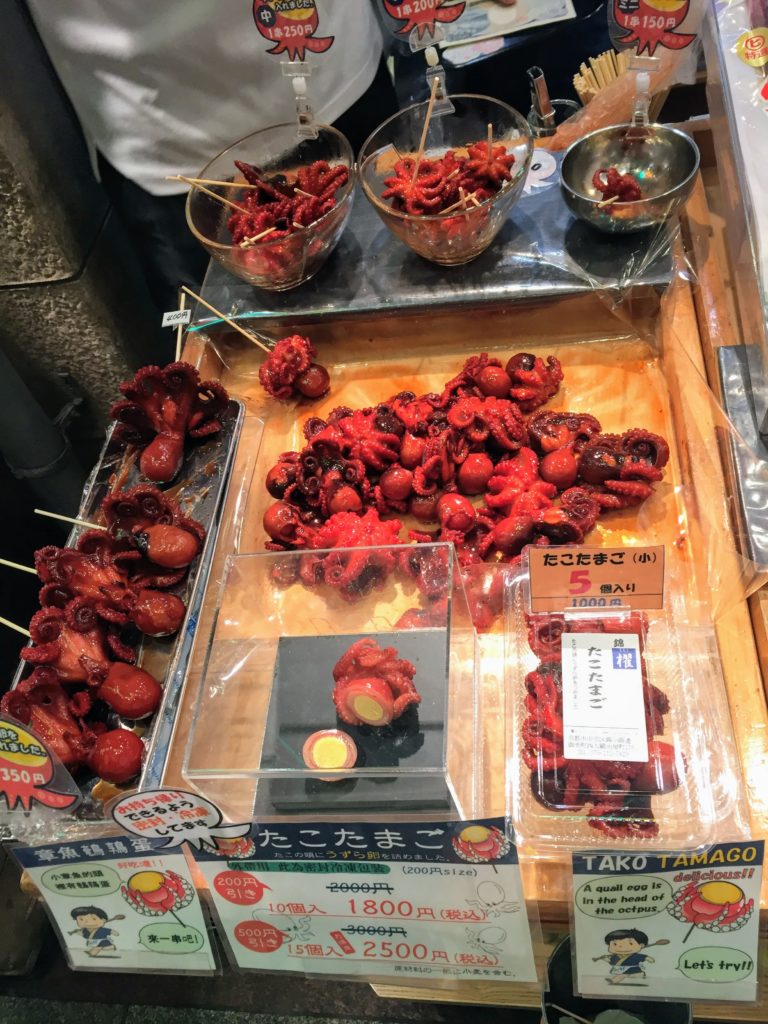
 When you are shopping at a department or clothing store, the cashier will often wrap up your purchase, keep it out of your reach on the counter as you are paying, and then carry it as you walk to the exit. They will hand your purchase back to you as you leave, give you a bow, and thank you for visiting their store. It was a little confusing for me the first time. I couldn’t figure out why I wasn’t immediately being handed the item that I’d just purchased. It’s just another level of politeness: They don’t want you to carry your purchase any farther than you absolutely have to!
When you are shopping at a department or clothing store, the cashier will often wrap up your purchase, keep it out of your reach on the counter as you are paying, and then carry it as you walk to the exit. They will hand your purchase back to you as you leave, give you a bow, and thank you for visiting their store. It was a little confusing for me the first time. I couldn’t figure out why I wasn’t immediately being handed the item that I’d just purchased. It’s just another level of politeness: They don’t want you to carry your purchase any farther than you absolutely have to!
Cash Or Card?
Be prepared to complete most of your transactions in cash. When I travel, I usually don’t carry much cash with me because credit cards feel safer. Tokyo, however, is so safe that you can feel comfortable carrying large amounts of cash with you. It was very strange for me to feel so safe in a big city!
Restaurant Etiquette
In restaurants, expect a different balance of service than you would get in America (although certain elements are similar to some experiences I’ve had in Europe, so it might not be as big of a culture shock for Europeans!).
In America (at least in big cities), the waitstaff is trained to check in on their tables rather frequently. After your entree arrives, typically somebody stops by to make sure everything is okay. In Japan, service is a little more hands off. If you want something, you can wave down your server and shout “SUMIMASEN!” (soo-mee-mah-sen). It means “excuse me.” There might be some places where this etiquette is not as appropriate, but just follow the social cues of the locals around you. Overall, don’t be surprised if you have to do a little bit more of the work in asking for what you want. You aren’t getting bad service. You’re getting service that is typical for Japan. And you’re in Japan, so don’t complain (huge personal pet peeve: people complaining about bad service, when in fact, they just don’t understand the culture that they’re visiting!).
The Japanese typically do not tip in restaurants. I once left a few extra yen with my bill in a small noodle shop, and the panic-stricken waitress chased me out the door shouting that I’d forgotten some of my money!
Face Masks and Health
The first cultural difference that you confront will occur as early as your plane trip to Japan: You will notice that many people are wearing surgical face masks, and they are clearly not involved in any surgery. The first time you see it, you might be a little startled. Why are all of these Japanese people protecting their nose and mouth? Do they know something I don’t? Is the air quality terrible? Are we in a radioactive zone?
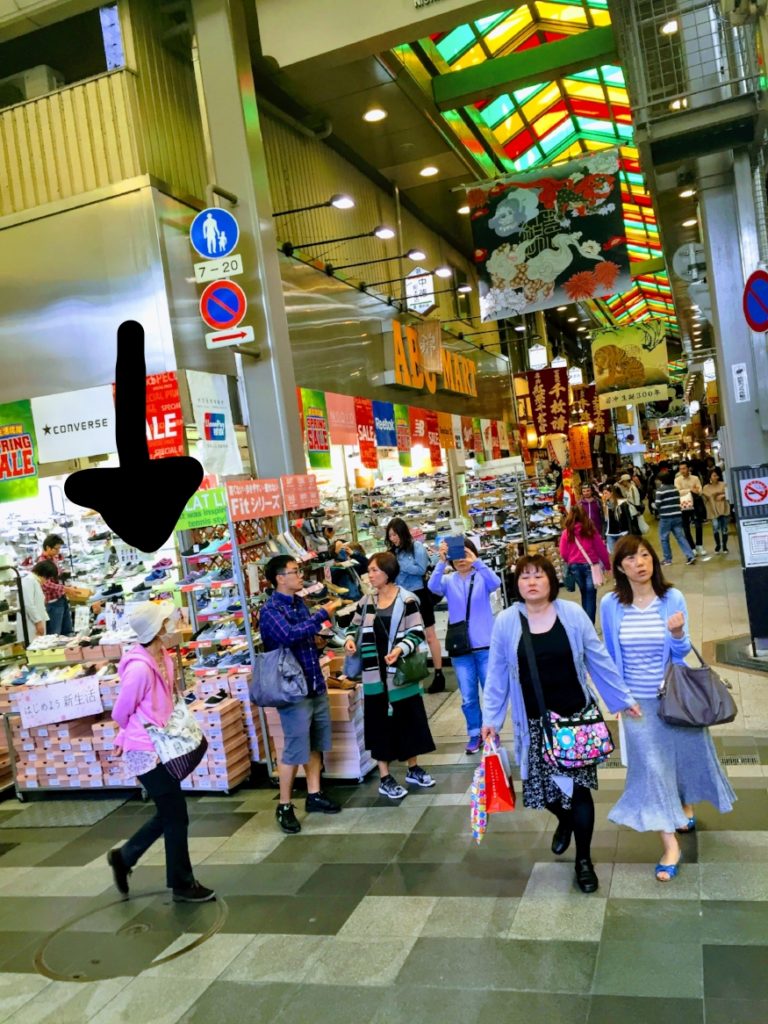
According to the first person who explained this face mask phenomenon to me, the Japanese are concerned about inhaling polluted air. But I started to question the validity of this explanation when I observed families walking together, and only a few people in the family wore face masks. I determined that either these families only cared about the safety and well-being of select children….or maybe there was a different reason for the masks.
Good News! You're Safe!
The Japanese are concerned about air quality, but for many of them, these masks are more about protecting YOU from THEIR germs!
If a Japanese person has the sniffles and thinks they might be contagious, they’ll put on a mask so as not to spread their germs. They’re concerned about exhaling bad air! That’s why you’ll see an uneven mix of mask-wearers within one family. One child might be sick, so that child wears a mask, but the rest of the family doesn’t. It makes sense that you’ll see a lot of people wearing these masks on an airplane, doesn’t it? You’re stuck in a confined, windowless germ-filled space for several hours! Of course they want to take precautions against spreading and being exposed to germs! After you leave the plane, you will see that it doesn’t matter who you are—a fancy businessperson, a child, a shop clerk, a Harajuku girl dressed up as a cupcake— everyone wears these masks!
And yes, this goes for you too! It probably comes as no surprise that in a culture this polite, blowing/wiping your nose or displaying any sign that you might not be completely healthy in a public place is considered extremely rude and inconsiderate. If you have a case of the sniffles while you are traveling, it is expected that you wear a mask in public places. From what I’ve heard, breathing the warm air of your own breath all day is actually very soothing as you’re healing!
